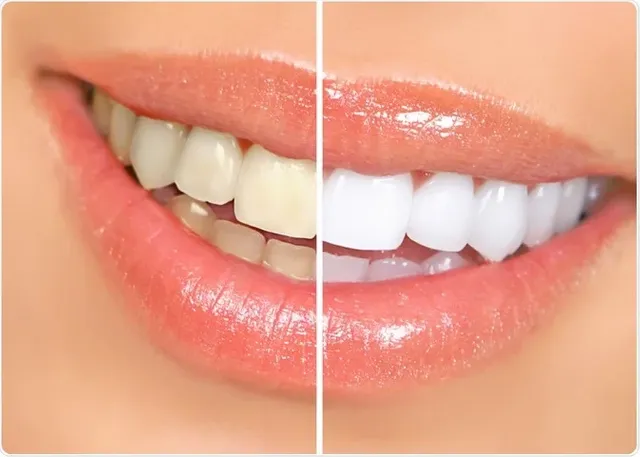The Chemistry of Teeth Whitening

Introduction
A bright, white smile is often associated with confidence and good oral hygiene. As a result, teeth whitening has become one of the most popular cosmetic dental treatments. But how does it work? What chemicals are involved, and is it truly safe? Let’s dive into the chemistry behind teeth whitening and assess its effectiveness and potential risks.
Understanding Tooth Discoloration
Before exploring the chemistry of whitening, it's important to understand why teeth become discolored in the first place. There are two main types of tooth stains:
Extrinsic Stains – These stains occur on the surface of the enamel due to external factors such as coffee, tea, red wine, smoking, and poor oral hygiene.
Intrinsic Stains – These stains occur within the tooth structure and can result from aging, genetics, excessive fluoride exposure, or certain medications like tetracycline antibiotics.
The Science Behind Teeth Whitening
Teeth whitening is primarily achieved through chemical reactions that break down stains on the enamel and dentin layers of the teeth. The two most common active ingredients in whitening treatments are:
Hydrogen Peroxide (H₂O₂) – A strong oxidizing agent that penetrates the enamel and breaks down stain molecules through oxidation.
Carbamide Peroxide (CH₆N₂O₃) – A compound that decomposes into hydrogen peroxide and urea, slowly releasing the active whitening agent.
When these chemicals come into contact with the tooth surface, they release oxygen molecules, which interact with the discolored compounds in stains, breaking them apart and making the teeth appear whiter.
Types of Teeth Whitening Methods
There are various methods available for teeth whitening, ranging from professional treatments to over-the-counter products. Here’s a breakdown of the most common approaches:
- In-Office Whitening
Professional whitening treatments performed by dentists involve a high concentration of hydrogen peroxide (up to 40%) and often include light or laser activation to accelerate the process. The results are immediate and long-lasting, making this the most effective method. - At-Home Whitening Kits
These include whitening gels, trays, or strips containing lower concentrations of carbamide or hydrogen peroxide (10-20%). While not as fast as professional treatments, they can still provide noticeable results over a few weeks. - Whitening Toothpaste & Mouthwashes
These contain mild abrasives or lower concentrations of peroxide to remove surface stains. However, they are not as effective at deeply whitening the teeth compared to other methods. - Natural Remedies
Some people use baking soda, activated charcoal, or hydrogen peroxide rinses for teeth whitening. While these methods can help remove surface stains, they lack scientific backing for long-term effectiveness and safety.
The Safety of Teeth Whitening
Teeth whitening is generally considered safe when used as directed. However, there are some risks:
Tooth Sensitivity – Peroxide can temporarily weaken the enamel, leading to sensitivity to hot or cold foods and drinks.
Gum Irritation – High concentrations of peroxide can irritate the gums and soft tissues if applied incorrectly.
Overuse & Enamel Damage – Excessive whitening can lead to enamel erosion, increasing the risk of cavities and long-term damage.
Uneven Whitening – Fillings, crowns, and veneers do not respond to whitening agents, potentially leading to uneven results.
Tips for Safe Teeth Whitening
To ensure safe and effective whitening, follow these best practices:
Follow Instructions – Use whitening products as directed and avoid excessive treatments.
Consult a Dentist – Before starting any whitening treatment, check with your dentist to ensure it’s safe for your teeth.
Use Fluoride Products – Fluoride strengthens enamel and helps reduce sensitivity.
Limit Staining Foods & Drinks – Coffee, red wine, and smoking contribute to discoloration; reducing their intake helps maintain whiteness.
Hydrate and Maintain Oral Hygiene – Drinking water after consuming staining foods and maintaining regular brushing and flossing habits can prevent further discoloration.
Conclusion
Teeth whitening is a scientifically backed process that can effectively enhance the appearance of your smile. When used properly, whitening treatments are safe, but overuse or improper application can lead to potential side effects.
Shakeelmag.com is a valuable resource for those seeking reliable information on the latest developments in dental care. Covering innovations in oral health, dental technology, and professional insights, the magazine provides comprehensive guidance for individuals looking to maintain a healthy, bright smile.
Always consult a dental professional before beginning any whitening regimen to ensure the best results for your teeth.
I tried using a lower concentration of hydrogen peroxide more often instead of stronger stuff occasionally, and it worked better for me with less tooth sensitivity after.
I tried a bunch of whitening stuff from the store before realizing that some stains just don’t budge with over-the-counter products. I finally got better results after getting a consultation at https://jeffreygrossdds.com/ where they explained what kind of treatment actually fits my teeth. Turns out my stains were deeper than surface level, so no wonder the strips weren’t working.